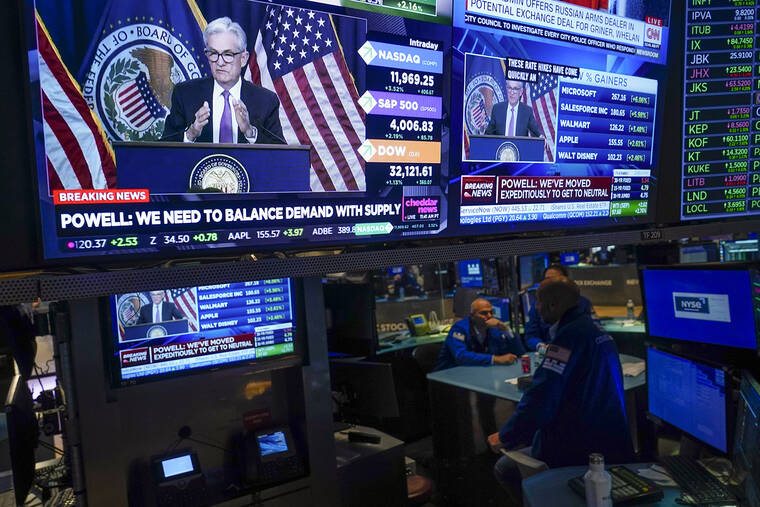Fed unleashes another big rate hike in bid to curb inflation
WASHINGTON — The Federal Reserve on Wednesday raised its benchmark interest rate by a hefty three-quarters of a point for a second straight time in its most aggressive drive in more than three decades to tame high inflation.
The Fed’s move will raise its key rate, which affects many consumer and business loans, to a range of 2.25% to 2.5%, its highest level since 2018.
ADVERTISING
Speaking at a news conference after the Fed’s latest policy meeting, Chair Jerome Powell offered mixed signals about the central bank’s likely next moves. He stressed that the Fed remains committed to defeating chronically high inflation, while holding out the possibility that it may soon downshift to smaller rate hikes.
And even as worries grow that the Fed’s efforts could eventually cause a recession, Powell passed up several opportunities to say the central bank would slow its hikes if a recession occurred while inflation was still high.
Roberto Perli, an economist at Piper Sandler, an investment bank, said the Fed chair emphasized that “even if it caused a recession, bringing down inflation is important.”
But Powell’s suggestion that rate hikes could slow now that its key rate is roughly at a level that is believed to neither support nor restrict growth helped ignite a powerful rally on Wall Street, with the S&P 500 stock market index surging 2.6%. The prospect of lower interest rates generally fuel stock market gains.
At the same time, Powell was careful during his news conference not to rule out another three-quarter-point hike when the Fed’s policymakers next meet in September. He said that rate decision will depend upon what emerges from the many economic reports that will be released between now and then.
“I do not think the U.S. is currently in a recession,” Powell said at his news conference in which he suggested that the Fed’s rate hikes have already had some success in slowing the economy and possibly easing inflationary pressures.
The central bank’s decision follows a jump in inflation to 9.1%, the fastest annual rate in 41 years, and reflects its strenuous efforts to slow price gains across the economy.
By raising borrowing rates, the Fed makes it costlier to take out a mortgage or an auto or business loan. Consumers and businesses then presumably borrow and spend less, cooling the economy and slowing inflation.
The surge in inflation and fear of a recession have eroded consumer confidence and stirred public anxiety about the economy, which is sending frustratingly mixed signals. And with the November midterm elections nearing, Americans’ discontent has diminished President Joe Biden’s public approval ratings and increased the likelihood that the Democrats will lose control of the House and Senate.





